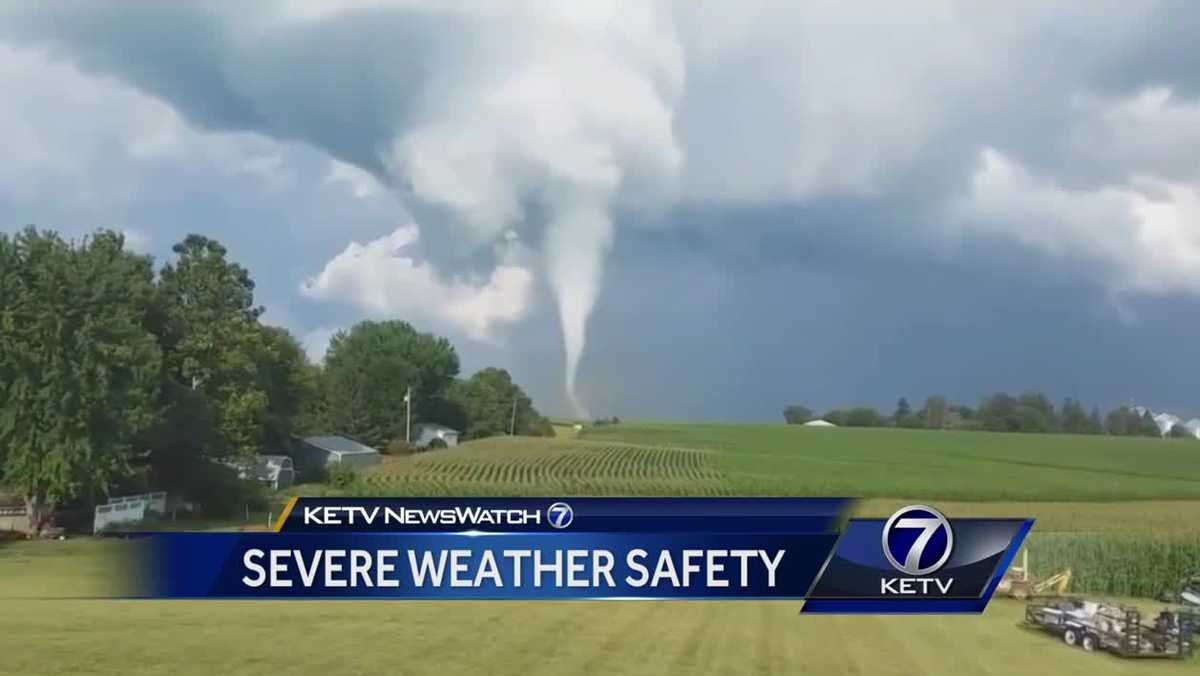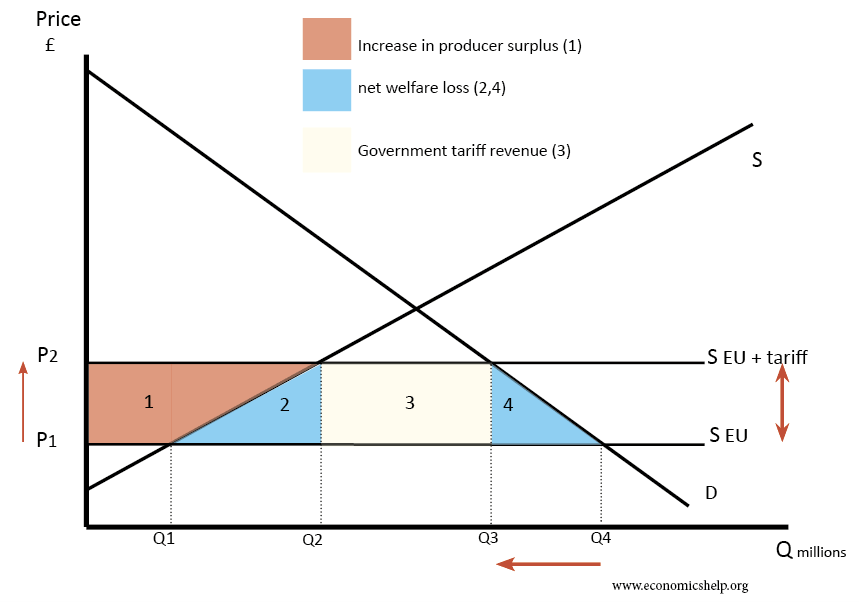Flood Safety Tips For Severe Weather Awareness Week Day 5

Table of Contents
Creating a Flood Preparedness Plan
A proactive flood preparedness plan is your first line of defense against the destructive power of floodwaters. This plan should address potential risks, evacuation strategies, and ways to protect your valuable possessions.
Identify Flood Risks
Understanding your specific risk is the cornerstone of effective flood preparedness.
- Determine your risk level: Are you located in a designated floodplain? Do you live near a river, creek, or other body of water prone to overflowing? Knowing your location's vulnerability is critical.
- Research historical flood data: Check online resources and your local government's website for historical flood information in your area. This will give you an idea of the frequency and severity of past floods.
- Consider the potential impact of flash floods: Flash floods can develop rapidly, leaving little time for evacuation. Understand the risk of flash floods in your area and plan accordingly.
- Understand local flood warnings and alert systems: Familiarize yourself with how your local authorities issue flood warnings and alerts. Sign up for emergency alerts via text message, email, or other methods. Knowing the warning signs is crucial to acting quickly.
Develop an Evacuation Plan
Having a detailed evacuation plan is vital, especially in situations where you have little time to react.
- Identify multiple evacuation routes: Plan several routes to higher ground, considering potential road closures due to flooding.
- Designate a meeting place outside the flood zone: Choose a safe location outside the flood-prone area where your family can reunite after evacuating.
- Prepare a go-bag with essential supplies: Pack a bag containing essential items such as water, non-perishable food, medications, first-aid kit, important documents (identification, insurance papers), and extra clothing.
- Practice your evacuation plan with your family: Regularly practice your evacuation plan to ensure everyone knows what to do and where to go in an emergency.
Elevate Important Items
Protecting your valuables from flood damage requires foresight and preparation.
- Move valuable belongings, furniture, and appliances to upper floors or higher ground: Elevate items that are susceptible to water damage.
- Protect electronics with waterproof covers or storage: Use waterproof containers or bags to protect sensitive electronic equipment.
- Consider flood-proofing your home: Install flood barriers, sump pumps, or other flood-protection measures to mitigate the risk of water damage.
Actions to Take During a Flood
When a flood warning is issued or you see rising water levels, immediate action is necessary.
Stay Informed
Staying informed is crucial during a flood event.
- Monitor weather reports closely: Pay close attention to weather forecasts and flood warnings from official sources.
- Heed evacuation orders immediately: If authorities issue an evacuation order, evacuate immediately. Do not delay.
- Stay aware of rising water levels: Constantly monitor water levels near your home and be aware of the potential for rapid increases.
- Avoid driving or walking through floodwaters: Floodwaters can be deceptively dangerous. Never drive or walk through them; the depth may be unknown and the currents incredibly strong.
Protect Yourself
Your safety is the top priority during a flood.
- Never enter floodwaters: Even seemingly shallow water can conceal strong currents and hidden hazards.
- Wear protective gear if you must work near floodwaters: If you must work near floodwaters (for example, assisting in sandbagging), wear appropriate protective gear, including waterproof boots and gloves.
- Turn off utilities if instructed by authorities: If advised by emergency services, turn off gas, electricity, and water supplies to prevent further damage.
- Seek higher ground immediately: If your home is threatened, move to higher ground immediately and follow your evacuation plan.
Secure Your Property
Take steps to minimize flood damage to your property.
- Bring loose outdoor objects inside or secure them firmly: Bring in loose items such as patio furniture, garbage cans, and garden decorations.
- Protect your windows and doors from damage: If possible, board up windows and reinforce doors to minimize water damage.
Post-Flood Safety and Recovery
After the floodwaters recede, there are still significant safety considerations.
Assessing the Damage
Carefully assess the damage after the floodwaters have receded.
- Avoid entering flooded areas until authorities deem them safe: Wait for official clearance before entering any flood-affected area.
- Check for gas leaks and electrical hazards: Before entering your home, check for gas leaks and electrical hazards. Contact utility companies if needed.
- Document damage with photos and videos for insurance claims: Take detailed photos and videos of the damage to support insurance claims.
Cleaning and Restoration
Cleaning up after a flood can be hazardous.
- Use caution when cleaning up flood-damaged areas; wear protective gear: Wear protective clothing, gloves, and masks to avoid exposure to contaminants.
- Discard contaminated food and water: Throw away any food or water that has come into contact with floodwaters.
- Properly dispose of flood debris: Dispose of flood debris according to local guidelines.
- Consider professional cleanup services for extensive damage: For significant damage, consider hiring professional cleanup and restoration services.
Contacting Authorities
Seek assistance from the appropriate authorities.
- Report damages to your insurance company: Contact your insurance company as soon as possible to report the damage and begin the claims process.
- Contact local authorities for assistance with recovery efforts: Reach out to local authorities for assistance with debris removal, financial assistance, or other recovery services.
- Look for resources available for flood victims: Look into available resources like government aid programs or charitable organizations offering support to flood victims.
Conclusion
Flood safety is paramount, especially during Severe Weather Awareness Week. By proactively creating a flood preparedness plan, taking appropriate actions during a flood, and following safe recovery procedures, you can significantly reduce the risks and protect your loved ones. Remember, being informed and prepared is your best defense against the devastating effects of floods. Take the time today to review these flood safety tips and create a comprehensive plan for your family. Don't wait for a flood to strike—prepare for flood safety now! Develop your flood safety plan today and protect your family and home.

Featured Posts
-
 Zoryana Poyava Naomi Kempbell U Biliy Tunitsi Foto Z Londonskogo Zakhodu
May 25, 2025
Zoryana Poyava Naomi Kempbell U Biliy Tunitsi Foto Z Londonskogo Zakhodu
May 25, 2025 -
 Auto Sector Rebound Fuels European Market Growth Lvmh Stock Suffers
May 25, 2025
Auto Sector Rebound Fuels European Market Growth Lvmh Stock Suffers
May 25, 2025 -
 Sean Penn Questions Dylan Farrows Allegations Against Woody Allen
May 25, 2025
Sean Penn Questions Dylan Farrows Allegations Against Woody Allen
May 25, 2025 -
 Pedestrian Hit By Vehicle On Princess Road Live Emergency Response
May 25, 2025
Pedestrian Hit By Vehicle On Princess Road Live Emergency Response
May 25, 2025 -
 Analysis G 7s Consideration Of Reduced Tariffs For Chinese Products
May 25, 2025
Analysis G 7s Consideration Of Reduced Tariffs For Chinese Products
May 25, 2025
Latest Posts
-
 Kiefer Sutherlands Emotional Tribute To Donald Sutherland At Csas
May 25, 2025
Kiefer Sutherlands Emotional Tribute To Donald Sutherland At Csas
May 25, 2025 -
 Les Gens D Ici Un Apercu De Leur Mode De Vie
May 25, 2025
Les Gens D Ici Un Apercu De Leur Mode De Vie
May 25, 2025 -
 Canadian Screen Awards Kiefer Sutherlands Tribute To Donald Sutherland
May 25, 2025
Canadian Screen Awards Kiefer Sutherlands Tribute To Donald Sutherland
May 25, 2025 -
 Decouvrir La Culture Des Gens D Ici
May 25, 2025
Decouvrir La Culture Des Gens D Ici
May 25, 2025 -
 Kiefer Sutherland Pays Tribute To His Late Father At Canadian Screen Awards
May 25, 2025
Kiefer Sutherland Pays Tribute To His Late Father At Canadian Screen Awards
May 25, 2025
